
Andrzej Sapkowski is a Polish fantasy writer, essayist, translator and a trained economist. He is best known for his six-volume series of books The Witcher, which revolves around the eponymous "witcher," a monster-hunter, Geralt of Rivia. It began with the publication of Last Wish (1990), and was completed with the publication of standalone prequel novel Season of Storms (2013). The saga has been popularized through television, stage, comic books, video games and translated into 37 languages making him the second most-translated Polish science fiction and fantasy writer after Stanisław Lem.

Jan Žižka z Trocnova a Kalicha was a Czech general who was a contemporary and follower of Jan Hus and was a Radical Hussite and led the Taborites. Žižka was a successful military leader and is now a Czech national hero. He was nicknamed "One-eyed Žižka", having lost one and then both eyes. Jan Žižka led Hussite forces against three crusades and never lost a single battle although he was completely blind in his last stages of life.

Janusz Gajos is a Polish film, television and theatre actor as well as pedagogue and photographer. Professor of Theatre Arts and an Honorary Doctor of the National Film School in Łódź, he is considered one of the greatest Polish actors.
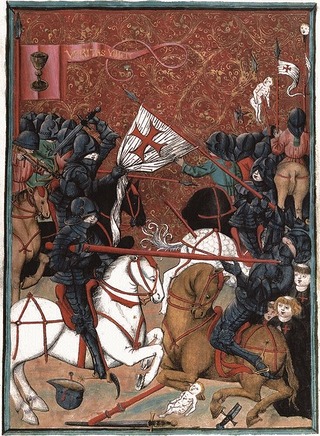
The Hussite Wars, also called the Bohemian Wars or the Hussite Revolution, were a series of civil wars fought between the Hussites and the combined Catholic forces of Holy Roman Emperor Sigismund, the Papacy, and European monarchs loyal to the Catholic Church, as well as various Hussite factions. At a late stage of the conflict, the Utraquists changed sides in 1432 to fight alongside Roman Catholics and opposed the Taborites and other Hussite spin-offs. These wars lasted from 1419 to approximately 1434.

Zawisza the Black of Garbów, of Sulima coat of arms, was a Polish knight and nobleman who served as a commander and diplomat under Polish king Władysław II Jagiełło and Hungarian-Bohemian king Sigismund of Luxembourg. During his life, he was regarded as a model of knightly virtues and was renowned for winning multiple tournaments.
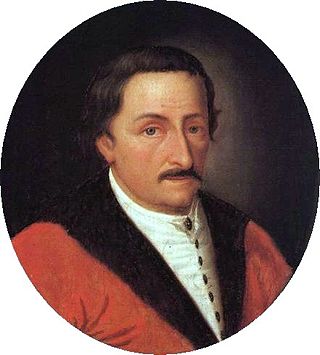
Andrzej Maksymilian Fredro was a Polish szlachcic and writer.
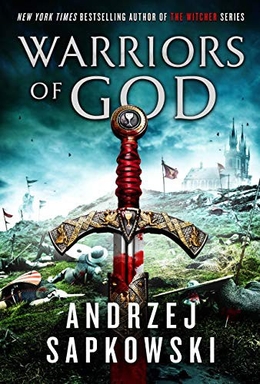
Warriors of God is a historical novel with fantasy elements, written by Andrzej Sapkowski. It is the sequel to Narrenturm in the Hussite Trilogy. Its events take place in Bohemia and Silesia, during the time of Hussite Wars.

Sigismund Korybut was a duke from the Korybut dynasty, best known as a military commander of the Hussite army and a governor of Bohemia and Prague during the Hussite Wars.

Jakub Wędrowycz is the protagonist of a number of short stories by Andrzej Pilipiuk, a Polish science fiction and fantasy writer. Wędrowycz is an antihero, an elderly alcoholic, moonshine producer, poacher, amateur exorcist and fighter against all sorts of supernatural forces dwelling around his village, from aliens to vampires, demons and devils, as well as more mundane threats such as Russian mafia, policemen and tax inspectors.
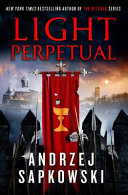
Light Perpetual is a historical novel with fantasy elements, written by Andrzej Sapkowski, the last part of the Hussite Trilogy. Its events take place in Bohemia, Silesia and Poland, during the time of Hussite Wars. Its action takes place from 1429 until the Battle of Lipany.
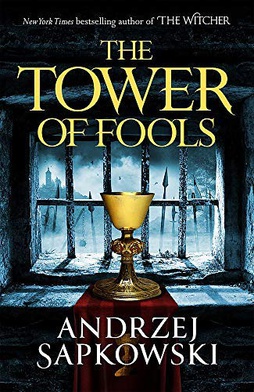
The Tower of Fools is the first historical fantasy novel in the Hussite Trilogy written by Polish fantasy writer Andrzej Sapkowski, first published in 2002 in Polish and in English in 2020. It is followed by Warriors of God and Lux perpetua.

Geralt of Rivia is a fictional character and the protagonist of The Witcher series of short stories and novels by Polish author Andrzej Sapkowski. He is a magically enhanced monster-hunter known as a "witcher", who possesses supernatural abilities due to his mutations.

The Hexer or The Witcher is a 2001 Polish fantasy film directed by Marek Brodzki and written by Michał Szczerbic. It stars Michał Żebrowski as Geralt of Rivia. The story is based on the books and stories of The Witcher written by Polish author Andrzej Sapkowski.

Time of Contempt is the second novel in the Witcher Saga written by Polish fantasy writer Andrzej Sapkowski, first published 1995 in Polish, and 2013 in English. It is a sequel to the first Witcher novel Blood of Elves and is followed by Baptism of Fire.

Bernard of Niemodlin, was a Duke of Strzelce and Niemodlin during 1382–1400, Duke of Opole during 1396–1400, from 1400 until 1450 sole ruler over Strzelce and Niemodlin, from 1401 ruler over Olesno and Lubliniec, from 1420 ruler over Prudnik and in 1424 ruler over Głogówek, during 1434–1450 ruler over Kluczbork and Byczyna and from 1450 ruler over only Olesno.
Bolko V the Hussite was a Duke of Opole between 1422–1424, ruler over Głogówek and Prudnik since 1424, Duke of Strzelce and Niemodlin from 1450 and ruler over Olesno since 1455.

The Witcher is a series of six fantasy novels and 15 short stories by Polish author Andrzej Sapkowski. The series revolves around the eponymous "witcher", Geralt of Rivia. "Witchers" are monster hunters given superhuman abilities for the purpose of killing dangerous creatures. The Witcher began with a titular 1986 short story that Sapkowski entered into a competition held by Fantastyka magazine, marking his debut as an author. Due to reader demand, Sapkowski wrote 14 more stories before starting a series of novels in 1994. Known as The Witcher Saga, he wrote one book a year until the fifth and final installment in 1999. A standalone prequel novel, Season of Storms, was published in 2013.
The Hussite Trilogy is a historical fantasy series of novels by Polish author Andrzej Sapkowski. It consists of three books: The Tower of Fools, Warriors of God and Light Perpetual. It is set in the Lands of the Bohemian Crown during the Hussite Wars (1419–1434).
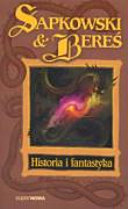
Historia i fantastyka is a book-length interview of Polish fantasy writer Andrzej Sapkowski conducted and published in book format by Stanisław Bereś in 2005.

The coat of arms, that serves as the symbol of the Opole Voivodeship, Poland, features a yellow (golden) eagle wearing a yellow (golden) crown, placed on a blue background. It was adopted in 2001.
















